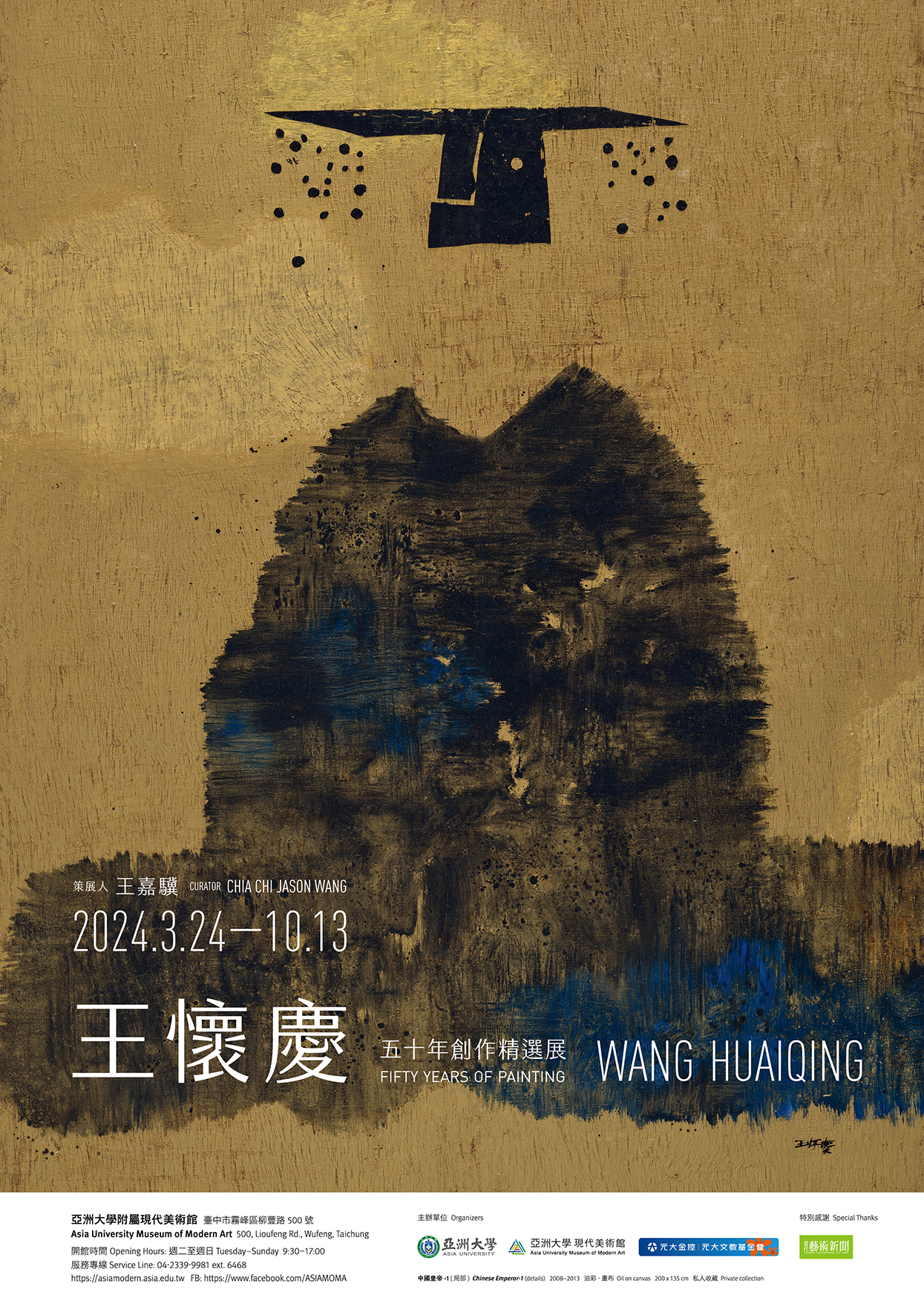Wang Huaiqing: Fifty Years of Painting
Curator: Chia Chi Jason Wang
Introduction
“Wang Huaiqing: Fifty Years of Painting” cherry-picks the representative works of contemporary Chinese artist Wang Huaiqing (b. 1944) in his 50 years of practice from the 1970s to date.
Born in Beijing, Wang Huaiqing was admitted to the Central Academy of Arts and Crafts (Academy of Arts and Design, Tsinghua University, Beijing today) in 1964. Before long, the Cultural Revolution (1966-1976) erupted, during which students and faculties were forced to labor for reform in the countryside. Hence, all the studies were put on a halt, so Wang could not graduate until 1971. From 1975 to 1978, apart from the assigned work of stage design, he had begun working with oil paint, along with practices in serial pictures and book illustration.
In 1979, he advanced to the graduate program of
Entering the 1990s, he found inspirational formal resources from the wooden structure of mortise and tenon in the Ming-style furniture. Deconstructing the structure, the artist reassembled and joined visually over canvas or juxtaposed and arranged those wooden components that had deconstructed or scattered—Wang Huaiqing hence established an art style unique to his own. In addition to oil paint as his medium, he also worked with ink painting. In the meantime, he imbued cultural meanings into his art practice more consciously. Through tangible, real objects perceived from reality, he connoted the fractures of the contemporary society of China from its history and tradition as well as imparted profound senses of reconstruction and reconnection. The irregular geometrical lexicon observed in Wang’s earlier practice by then had evolved significantly into an expressionist trait betwixt abstractionism and figurativism.
Beside the Ming-style furniture, Wang Huaiqing excavated other formal elements or motifs worthy of development from the histories of Chinese arts and material culture as well, vividly introducing them into painting and manifesting personal views on culture and history. Furthermore, he also experimented presenting the texture and beauty of ink in oil painting. Meanwhile, he also infused the aesthetics rich in the sense of Chinese calligraphy. Reflecting the spirit and specialty of the traditional Chinese culture had always been the crucial spiritual core in Wang’s practice. The history of Chinese calligraphy and painting was a vital formal source he could draw inspirations from as well.
By means of creative reformation based on legacy, Wang Huaiqing built a bridge to reconnect himself with tradition. The brush-and-ink (bimo) known in the literati calligraphy and painting, after his study and transformation, were made into a whole new style unique to his artistic dialect. Rather distinct from the traditional approach, in which the calligraphic brush wielded by literati stressed on the operation and manipulation between the wrist and fingers, Wang amplified the force and scale for enormous pictures, shifting the practice to a promenade over canvas or within frame through bodily dynamic. The sporadic traces of swift stroke left by Chinese calligraphers in writing originally was elevated by Wang Huaiqing via whole-body movement into an unbridled visual wonder on paintings larger than life. In a nutshell, the artist magnified calligraphic strokes, crystalizing such into an abstract composition richer in the contemporary outlooks.
“Wang Huaiqing: Fifty Years of Painting” combs through the works of characteristics and highlights across the artist’s various stages, featuring especially the cherished pieces from the collections of major institutions and collectors in Taiwan that have been acquired or collected for years as the selected and invited works. In response to the spatial attributes of the galleries at Asia University Museum of Modern Art, nearly 50 pieces of paintings and sculptural works in total are presented. Through this exhibition, we endeavor to offer the crowd fond of contemporary art a glimpse at the artistic locus and quintessence of Wang Huaiqing.



